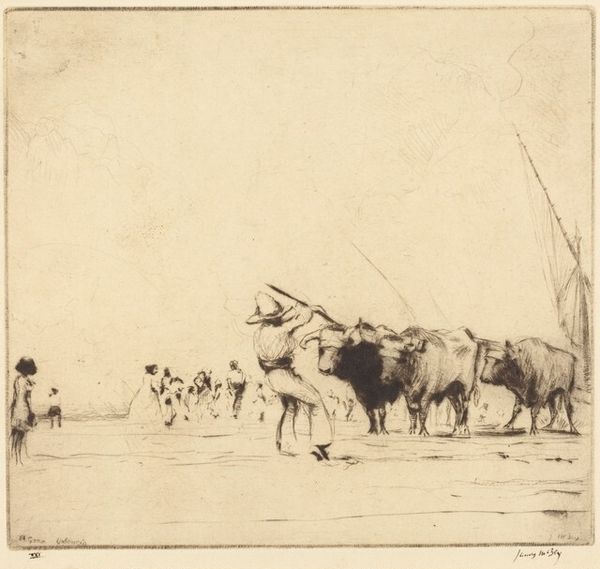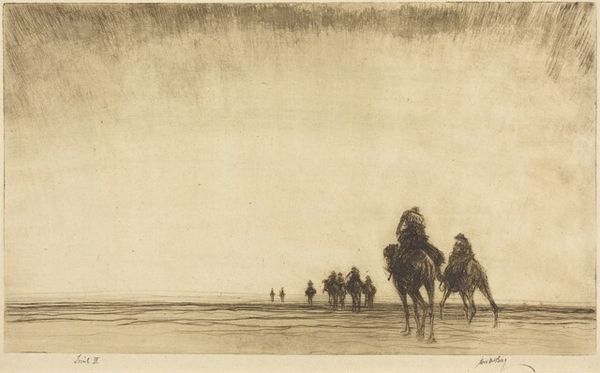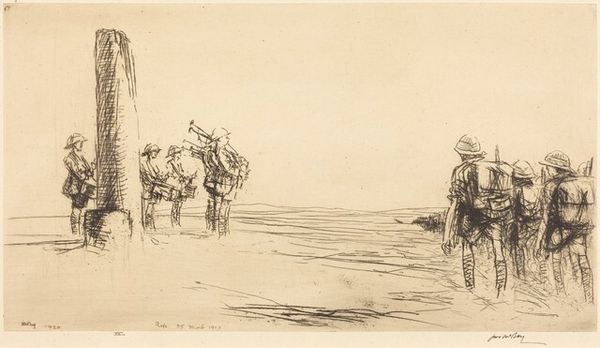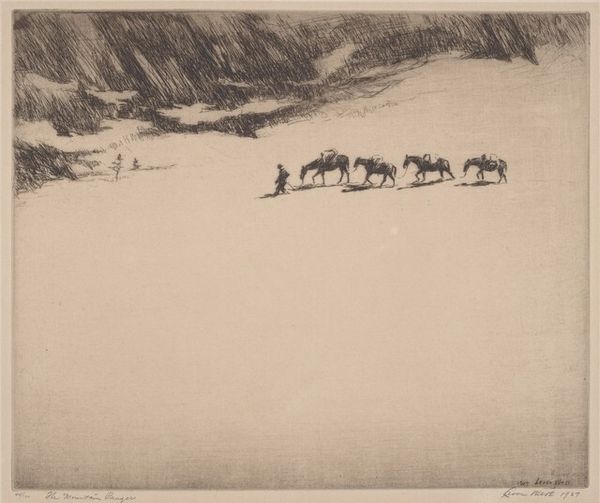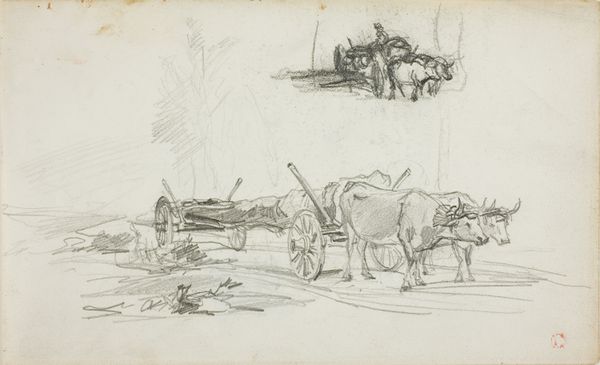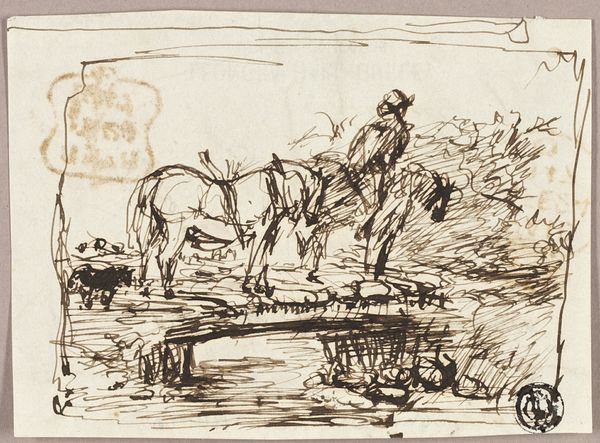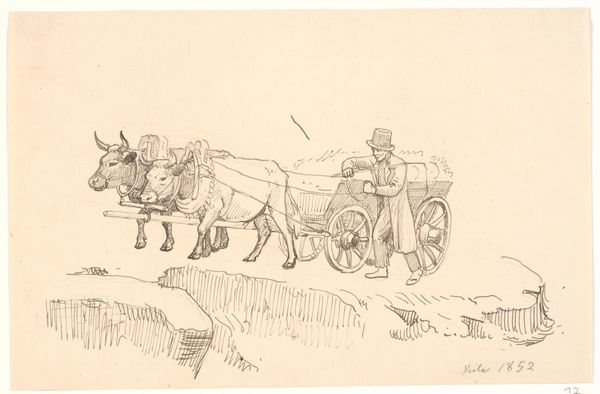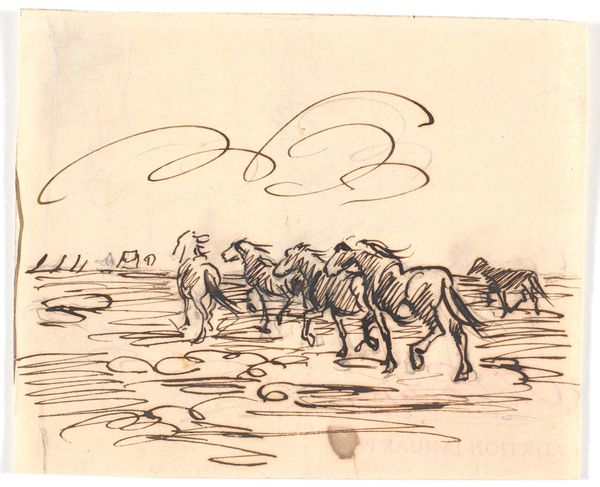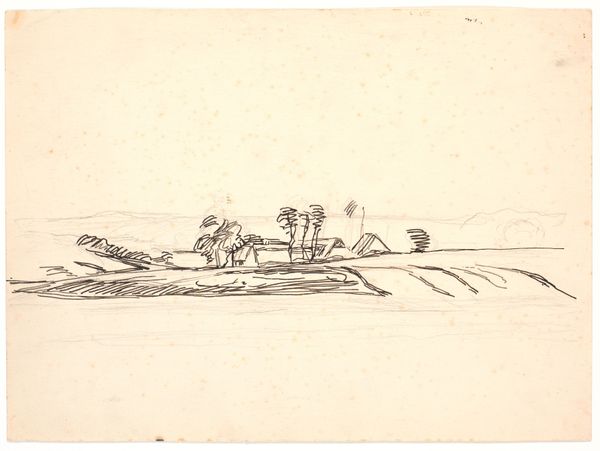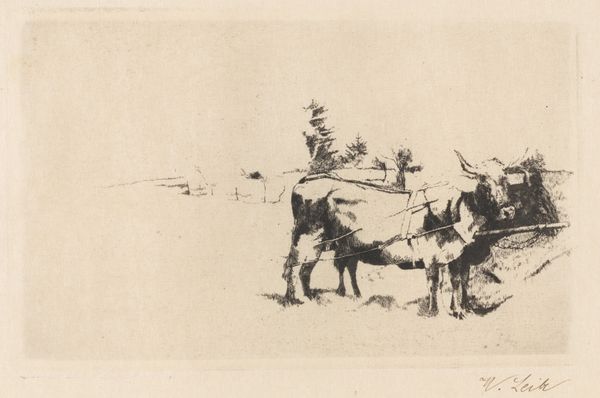
drawing
#
drawing
#
imaginative character sketch
#
light pencil work
#
blue ink drawing
#
quirky sketch
#
personal sketchbook
#
ink drawing experimentation
#
sketchbook drawing
#
watercolour illustration
#
sketchbook art
#
fantasy sketch
Dimensions: overall (approximate): 20.5 x 26.7 cm (8 1/16 x 10 1/2 in.)
Copyright: National Gallery of Art: CC0 1.0
Curator: R. Stevens Wright created this work, titled "Ploughman and Horses," in 1931. It's a drawing, likely ink on paper, capturing a rural scene. Editor: Ah, my first impression is almost… melancholy. It's stark, the sepia tones lend it an aged feel, and the lines are so sparse, suggesting perhaps the back-breaking labor of farming. It almost makes me want to write a haiku. Curator: Precisely! Let’s unpack that a bit. Wright produced this in 1931. Consider the historical context. The Great Depression had begun, devastating rural communities. This drawing reflects that precarity and exploitation inherent in agrarian economies of the era. It’s about more than just pretty horses, it speaks to systemic oppression. Editor: Okay, okay, but even just compositionally, it’s striking. The horses are looming, dominating the tiny figure of the ploughman. They're dark blots, really, against the faded background. I see an imbalance—nature and labor bearing down on humanity. What’s fascinating is the suggestion of motion… yet everything feels utterly still, as if all are stuck in place. It’s like a memory. Curator: I agree; we must recognize this "stillness" within the intersection of humans and the natural world. I feel compelled to observe how class dynamics further structure social order in agrarian communities, noting in particular the gendered dimensions, how historical sources are silent about the contributions of women within this drawing. Editor: Woah, I just noticed, look how thin the lines are that connect man and beast, reins almost like cobwebs—tenuous threads binding their fates. Are they trapped in their role, bound together despite themselves? Curator: Right, it’s tempting to romanticize rural labor. The image underscores economic disparities but lacks clear reference to land ownership, obscuring Indigenous claims, while privileging settler narratives in the region at the expense of the dispossessed populations. Editor: It’s powerful how a seemingly simple sketch can contain all of this. Curator: Absolutely, and understanding the forces operating at that time highlights this artist's capacity to use simple images as a lens. We are invited to recognize a deeper analysis regarding the socio-economic conditions that formed them. Editor: Exactly! It almost feels as if that solitary figure is whispering… and we have to lean in closely to hear their story.
Comments
No comments
Be the first to comment and join the conversation on the ultimate creative platform.
